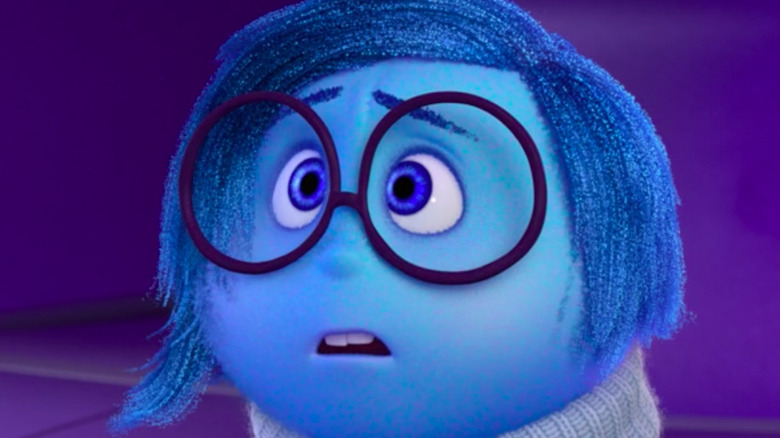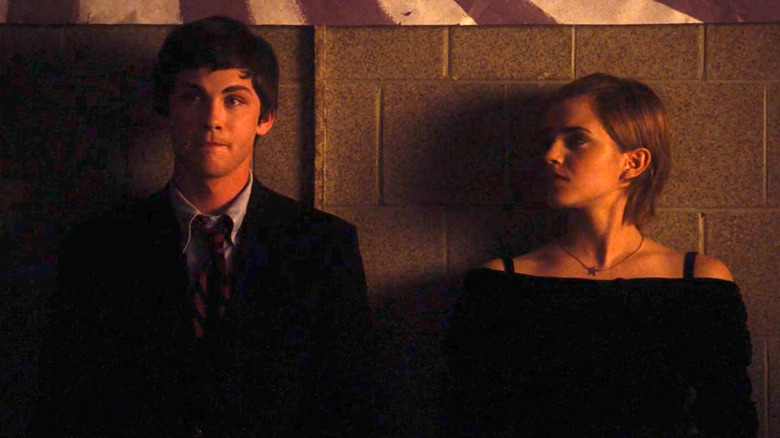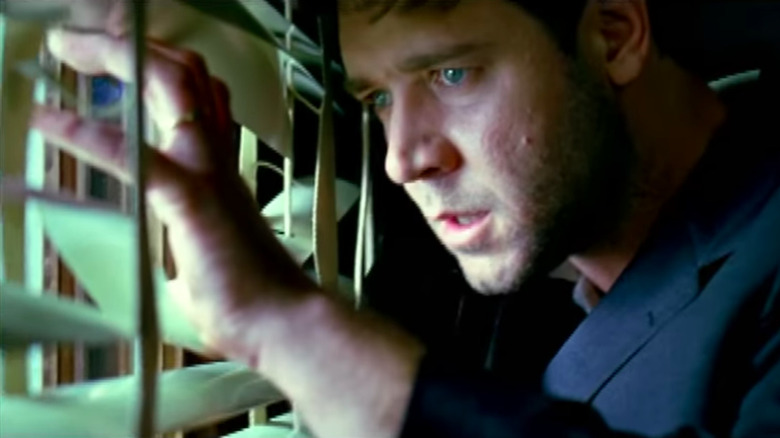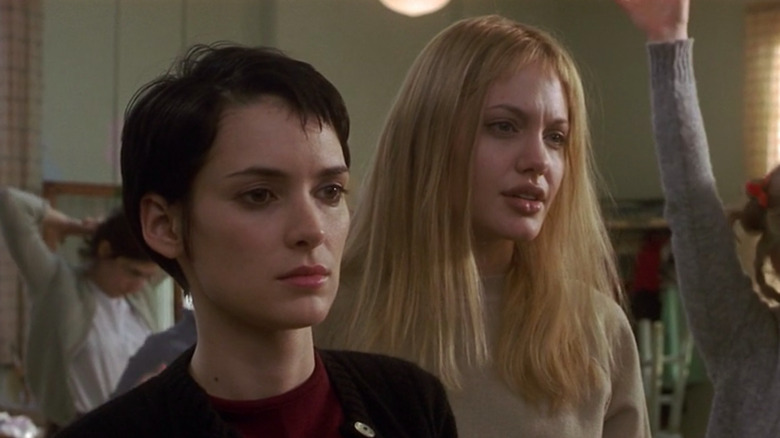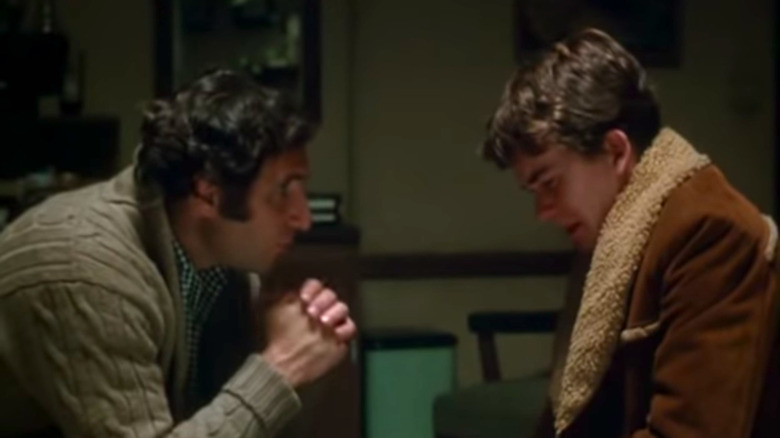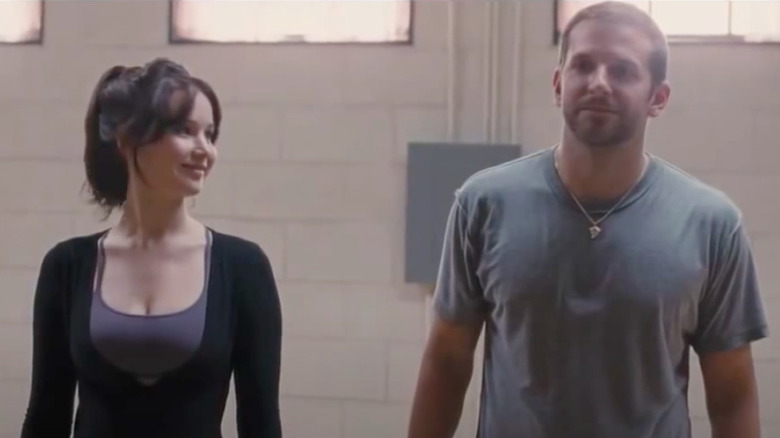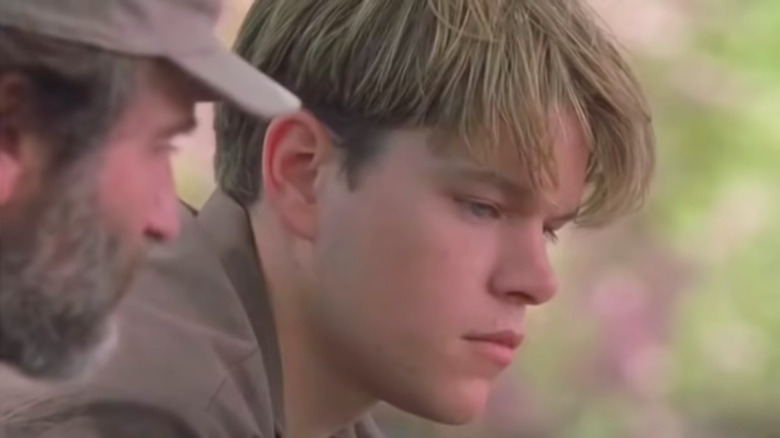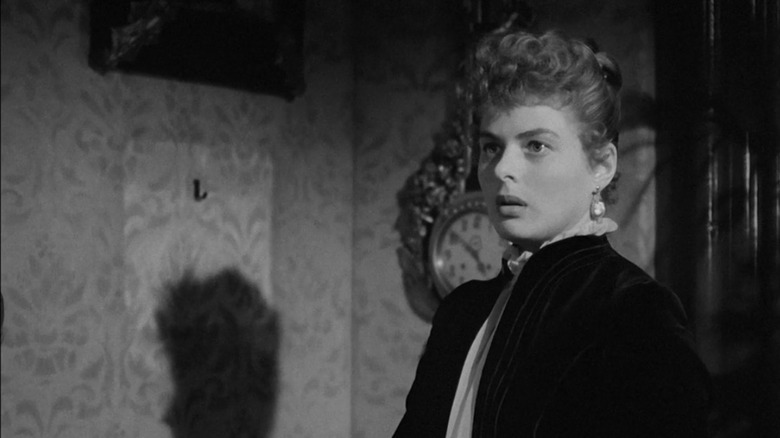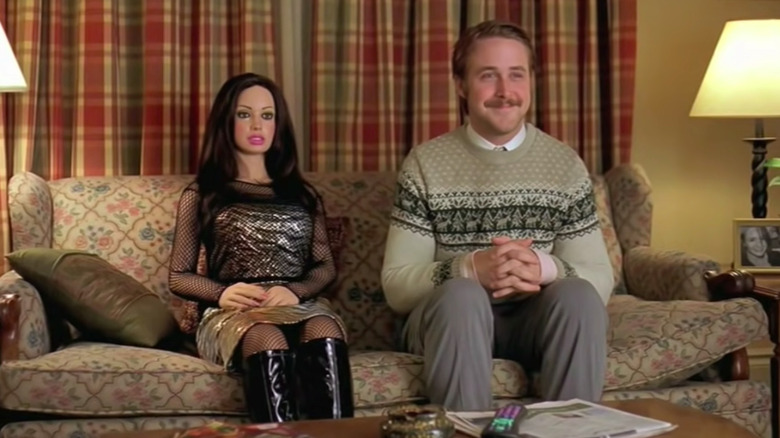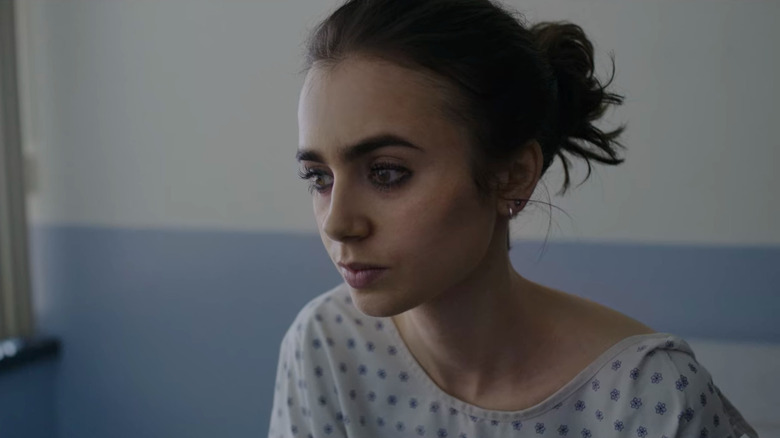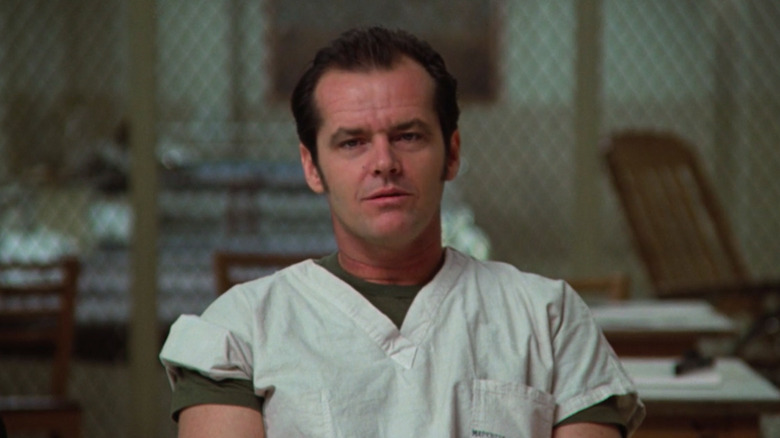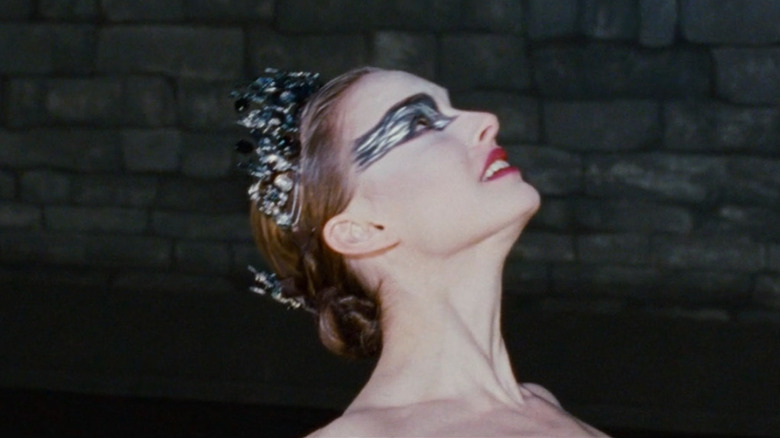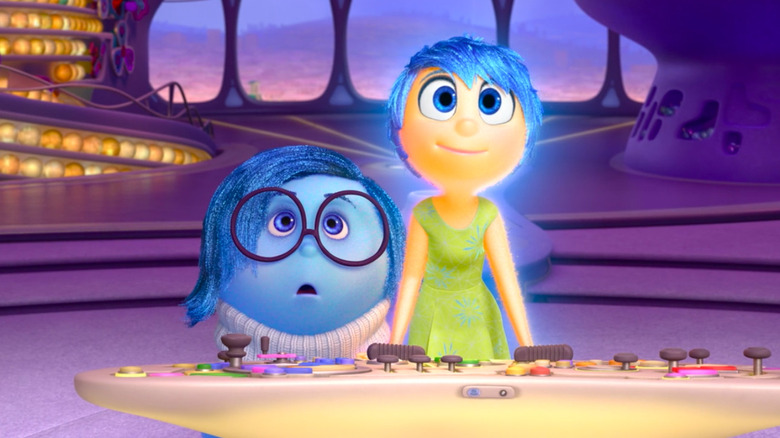12 Movies About Mental Health To Add To Your Must-Watch List
The movies haven't historically been kind to people living with mental health issues.
When Alfred Hitchcock's "Psycho" was released in 1960, it took the feared movie murderers of something like Fritz Lang's "M," combined them with "mental institution" thrillers like "Shock Corridor" and "Fear Strikes Out" (also starring Anthony Perkins) and pushed them into a new age by ascribing their unspeakable crimes to something perhaps beyond their control; it was such a new concept that the final moments of the film quite literally had a psychiatrist explaining it.
That film, in the minds of many, gave birth to the "slasher" genre — and in the decades that followed, everything from the "Halloween" movies to "Black Christmas" to "Delirium" and "Alone in the Dark" presented mental health and homicidal tendencies inextricably linked. This may have hit a literal boiling point when characters like Jessica Walters in "Play Misty for Me" evolved into Glenn Close's scorned woman of 1987's "Fatal Attraction," popularizing the sexualized, hysterical, mainstream movie mad lady that viewers would soon encounter in everything from "Fatal Attraction" to "Single White Female" and "Color of Night." On a parallel track, "split personality" mental illness tropes became popular in everything from "The Three Faces of Eve" (whose trailer also required substantial introduction of the concept) and "Sybil" to "Fight Club" and "Split." And don't forget the "Rambo" films, which came to illustrate the then-emerging concept of PTSD for a generation.
On the flip side, you had comedies like 1985's "Stoogemania," 1989's "The Dream Team" or 1990's "Crazy People," eager to ditch the more contemplative elements of "One Flew Over the Cuckoo's Nest" and instead simply indulge stereotypes of those who were "crazy" by making them eccentric, colorful, and endlessly banging their heads against padded walls. The latter famously received pushback for its "Crazy People Are Coming" ad campaign, perhaps indicating the tides turning towards an oncoming sensitivity.
Nowadays there is a far greater awareness of, and disgust towards, the stigmatization of people with mental illnesses, as well as the perception that mental health challenges result in violence or that therapy can't. It's safe to say that almost none of the aforementioned films, in the forms they were released, could be made today.
Instead, filmmakers are increasingly going out of their way to depict mental health struggled in more sensitive, illuminating and sympathetic ways. While some may still embellish details for dramatic effect, or not get every aspect of a particular mental illness correct, Hollywood films have increasingly come to reflect that people with mental health issues deserve help and support, not fear, intolerance and mockery.
With that expansive history in mind, here are a dozen movies that present thoughtful, compassionate depictions of mental health and seem to indicate a path forward for Hollywood.
The Perks of Being a Wallflower (2012)
Since its release 10 years ago, "The Perks of Being a Wallflower" has become a cult classic, and given its relatable portrait of the fraught experiences of high school and adolescence, it's easy to understand why the film has resonated with so many.
The story centers on Charlie (Logan Lerman), beginning his freshman year after spending the summer in a psychiatric facility following the suicide of his best and only friend. Charlie is immediately seen as easy prey for bullies — that is, until he meets Sam (Emma Watson) and Patrick (Ezra Miller), seniors who take him under their wing and include him in all sorts of seminal high school experiences.
The movie, written and directed by Stephen Chbosky based on his novel, is a touching depiction of how important and transformative friendships can be during adolescence. Charlie is still introverted and quiet but the acceptance of his friends helps him become more assertive and better cope with his ongoing depression struggles. His coming of age also brings his repressed memories of childhood sexual abuse to the surface, enabling him to finally confront what happened.
Yet, despite Charlie's struggles, the movie makes it clear that his friends and family see Charlie as the sweet person he is, not merely a personification of his mental health issues. It's one of the many reasons viewers have found "The Perks of Being a Wallflower" so stirring.
A Beautiful Mind (2001)
"A Beautiful Mind" is based on the life story of John Nash, a brilliant mathematician whose groundbreaking work brought him early success, only to be sidelined due to his struggles with paranoid schizophrenia.
What makes the movie so successful, however, is the way director Ron Howard and screenwriter Akiva Goldsman structure the story so it conveys what it feels like to suffer from mental illness. A majority of the film is told from Nash's (Russell Crow) perspective, which enables it to dramatize his experience with schizophrenia, from the onset of hallucinations he believes to be real through the realization that they're only in his mind. While that makes Nash a classic "unreliable narrator," it also enables viewers to experience exactly what he does as he becomes increasingly paranoid due to his illness.
Not everything about the movie's depiction of schizophrenia is accurate to either the condition in general or Nash's experiences in particular. For example, people with schizophrenia usually have auditory hallucinations, not visual ones like Nash does in the movie. However, by taking some dramatic license, "A Beautiful Mind" is able to paint a particularly human portrait of one man's struggles with mental illness while ensuring viewers will empathize.
Although viewers may not understand math any better at the end of the film than they did at the beginning, they will feel more enlightened about what it's like to struggle with a debilitating mental health condition, while simultaneously feeling like there is hope with the right treatment and support system.
Girl, Interrupted (1999)
An adaptation of the memoir of the same name, "Girl, Interrupted" depicts what happens when, following a suicide attempt, 18-year-old Susanna Kaysen (Winona Ryder) is admitted to a psychiatric hospital and diagnosed with borderline personality disorder in the 1960s. In addition to Susanna, the movie includes a number of characters with various conditions, including Angelina Jolie's controlling, manipulative Lisa.
The movie doesn't delve too deeply into the mental health struggles of the patients, including Susanna, instead preferring to depict the way the girls help and hinder one another's recovery. That means the film won't necessarily shed any real light on mental illness, and in some ways the movie glamorizes certain aspects of the experience, especially through Jolie's magnetic character, who often comes across as cool and misunderstood rather than genuinely in need of psychological help.
The film nonetheless does a good job of humanizing people — particularly adolescent girls — with mental illness. Plus, "Girl, Interrupted" shows that psychiatric hospitals can be a valuable source of life-changing care for those who need it, a necessary counter-narrative to the myriad of movies and TV shows (from 2001's "Session 9" to the "Nightmare on Elm Street" films to "Stateside" and "Mad Love") that use these institutions as shorthand for pain, suffering, and horror.
Ordinary People (1980)
The directorial debut of Robert Redford, "Ordinary People" is a moving meditation on loss, grief, and the struggle to achieve mental health after trauma.
The story focuses on the Jarrett family, the so-called ordinary people of the title, following the accidental death of the family's eldest son Buck (Scott Doebler) and their youngest son Conrad's (Timothy Hutton) suicide attempt due to survivor's guilt. Conrad continues to deal with post-traumatic stress disorder, including difficulty sleeping and flashbacks to the incident that led to his brother's death, even as his mother Beth (a wonderful Mary Tyler Moore, playing against type) refuses to so much as talk about her deceased son and his father Calvin (Donald Sutherland) is caught between the needs of his son and his wife.
The film is slow but deliberate in its illustration of each member of the family, and does an excellent job respectfully showcasing Conrad's conflict as he returns to school while seeing a patient therapist (Judd Hirsch) to work through his continuing guilt, anger, and grief over what happened to his brother. "Ordinary People" also depicts (and was made during) a time in the late 1970s and early 1980s when mental illness was more stigmatized than it is today, and through Beth, demonstrates the damage that denial of grief can do to both an individual and their loved ones. It's a raw but deeply poignant story that, despite the dated clothes and hairstyles, remains powerful today.
Silver Linings Playbook (2012)
On paper, "Silver Linings Playbook" shouldn't work as well as it does. The story focuses on Pat (Bradley Cooper), who spends several months in a psychiatric hospital after assaulting his wife's lover upon catching the pair together. There, he learns he's been suffering from untreated bipolar disorder, a reality that has led him to lose both his wife and his job, leaving him adrift and trying to figure out how to reclaim his life when he's released. Soon, he meets Tiffany (Jennifer Lawrence), who's recently widowed and struggling with her own unnamed mental health issues, who recruits him to be her partner in a ballroom dance competition in exchange for delivering a letter to his ex-wife.
While the premise could have been depressing, writer/director David O. Russell has instead made a lighthearted and uplifting film about two people finding common ground and desperately needed camaraderie partially due to their mental health issues. The movie takes Pat and Tiffany's problems seriously, but shows healing is possible. It also demonstrates how Pat's difficulties impact his family, including his tolerant mother (Jacki Weaver) and volatile father (Robert De Niro), and how their love for Pat is a source of strength as he attempts to rebuild his life.
Good Will Hunting (1997)
"Good Will Hunting" is best remembered, perhaps, as the movie that vaulted co-writers and stars Matt Damon and Ben Affleck to fame. But it's also a touching story about an orphaned young man from an abusive background that makes it difficult for him to get out of his own way.
Will Hunting (Damon) was brought up in the rough and tumble neighborhood of South Boston, and although he now has several good buddies, including Affleck's Chuckie, he was routinely abused by the foster families that took him in throughout his childhood. This has left him with a hard exterior that's more comfortable throwing a punch than expressing a feeling. However, Will also happens to be a genius, and his vast intelligence could lead to bigger things than his current position as a janitor at MIT, if he only had the courage to pursue them.
After his most recent arrest, he's ordered to see a therapist or go to jail, leading a highly resistant Will to finally find the sympathetic ear he needs in the form of Robin Williams' Sean. A psychologist from Will's neighborhood, Sean starts to slowly break down Will's walls, enabling him to see not only the possibilities for his career but also for his relationship with Skylar (Minnie Driver), a pre-med student at Harvard.
The movie demonstrates the challenges of overcoming childhood trauma, and Will's struggles to trust other people and believe that they genuinely care about him are heartbreaking to watch. Will's journey to finding Sean also touches on an important point: sometimes you have to see several mental health professionals before you find one that you really gel with. However, once you find the right one, working with a therapist can be truly transformative.
Gaslight (1944)
In recent years, the concept of "gaslighting" — manipulating someone in a way that makes them question their sanity — has come up frequently in the context of politics, social media and other topics. "Gaslight" is the movie the concept takes its name from.
A remake of the 1940 British film of the same title, which was based on Patrick Hamilton's play, the story follows the harrowing plight of Paula Alquist (Ingrid Bergman) as she meets, falls in love with, and marries the charming Gregory Anton (Charles Boyer) and moves with him back into the home she shared with her aunt, who was murdered there 10 years prior.
Soon after, Paula starts noticing little things changing in the house, like missing pictures and a gaslight that dims for no obvious reason. When Paula shares her observations and wonders what's happening, Gregory denies what she sees and manipulates her into believing she's both physically and mentally ill, isolating her from others in order to prevent the woman from realizing what he's really up to. It's an unnerving story, as well as a cautionary tale of how one person can psychologically influence and control another for nefarious reasons, all directed by George Cukor with nail-biting suspense.
Lars and the Real Girl (2007)
"Lars and the Real Girl" is a movie with an eyebrow-raising premise: socially awkward, reserved Lars (Ryan Gosling) purchases a sex doll from the internet and introduces her as a girlfriend named Bianca to his brother Gus (Paul Schneider) and sister-in-law Karin (Emily Mortimer). Instead of rejecting him or telling him he's crazy, however, Gus and Karin go along with Lars' delusion, eventually enlisting their entire snowy small town in doing the same. While at first some of the townspeople judge Lars, their desire to support him — and his sweetly chaste attitude toward Bianca — enable them to embrace the situation.
"Lars and the Real Girl" is a quiet, tender story of an entire town coming together to support someone struggling with a mental health issue. It's touching to see the townspeople go out of their way to take care of Lars through Bianca, and it's similarly refreshing to see the way Bianca's presence slowly brings Lars out of his shell, helping him engage with the world, tentatively form (real) relationships, and relinquish past trauma. The movie is so finely drawn that you're likely to find yourself unexpectedly becoming invested in Lars' romance with Bianca.
To The Bone (2017)
The Netflix original film "To The Bone" is a candid, often brutal look at one young woman's battle with anorexia. The movie, made by people who've experienced eating disorders, begins after 20-year-old Ellen (Lily Collins) has been struggling with her illness for a long time. Even though she's systematically killing herself, she can't seem to bring herself to eat, so when she gets into a new in-treatment facility, it may be her last chance to get well.
"To The Bone" is particularly effective in its depiction of the difficulties Ellen's family members face in dealing with her illness. While most of them aren't especially sympathetic, their frustration and inability to comprehend why Ellen insists on continuing to hurt herself is also understandable, given Ellen has repeatedly been in and out of treatment with minimal success.
Some critics have suggested that the film fetishizes the main character's spectacularly skinny body while failing to realistically address the issues that lead to eating disorders. Yet, the movie's goal isn't to examine anorexia in general; instead, it's a character study of someone contending with the condition. While "To The Bone" downplays Ellen's treatment to some degree, it does a good job demonstrating her psychological struggles, especially the denial that keeps her from improving.
One Flew Over the Cuckoo's Nest (1975)
"One Flew Over the Cuckoo's Nest" is considered a classic, and for good reason. It depicts the conflict between Jack Nicholson's McMurphy, a convicted criminal who fakes mental illness to get out of prison work duty, and Louise Fletcher's Nurse Ratched, the calculating, passive-aggressive overseer of the psychiatric ward where McMurphy is committed.
Ratched is considered one of the best (or worst, depending on your perspective) screen villains in movie history, and Fletcher's Oscar-winning performance is truly unnerving as she calmly manipulates the patients under her care in order to maintain her oppressive control. While McMurphy is certainly no saint, his ability to see through Ratched — and his desire to bring some modicum of joy into the lives of the men — opens them up to new possibilities.
The representation of Ratched and the facility's other workers means "One Flew Over the Cuckoo's Nest," which was directed by Milos Forman and adapted from the novel by Ken Kesey, is not a movie that champions the value of psychiatric institutions, however it's sympathetic to its mentally ill characters and never judges them for coloring outside the lines of social norms. It's a story that explores institutionalization, freedom, and control through extremely dark comedy and a shocking, difficult conclusion. Even though the film isn't an easy watch, it sticks with you.
Black Swan (2010)
Few movies have captured the drive for artistic perfection — and how threatening it can become to one's mental health — better than Darren Aronofsky's psychological thriller "Black Swan." After Natalie Portman's ballet dancer Nina wins the lead role in "Swan Lake," she becomes increasingly haunted by internal and external demons. When another dancer, Lily (Mila Kunis), joins the company who may make a better Black Swan than Nina, Nina's paranoia and obsession only get worse, leading her to hallucinations and self-harm.
"Black Swan" features extended scenes of lovely ballet dancing, but it is Nina's desire to be the perfect Swan that makes the movie compelling. As she continues to unravel mentally, it increases her ability to embody the role of the Black Swan that she worries about the most. While few are familiar with the world of ballet, many viewers will be able to relate to the way the demands of one's career or family can result in them sacrificing elements of their mental health. "Black Swan" takes this idea to an unsettling extreme.
Inside Out (2015)
"Inside Out" is one of the most beloved movies in Pixar's acclaimed catalogue due to it's a highly sympathetic, charmingly imagined story about what happens when 11-year-old Riley (Kaitlyn Dias) goes through a major life transition. More specifically, it's about what happens inside Riley's mind as she struggles to adjust after the major life change of a move to San Francisco. The film isn't about mental illness, per se, as it is about the importance of properly acknowledging, processing and addressing trying times that could potentially lead to trouble down the road.
The movie's main characters are personifications of Riley's emotions, trying to handle the turmoil she feels while adapting to a new city, new friends, and a new reality. At one time or another, pretty much everyone will experience a personal upheaval that will leave them feeling unmoored; this delicate depiction of one little girl and her anthropomorphic emotions' challenges navigating this transition makes the movie familiar and novel at the same time.
The filmmakers consulted neuroscientists and psychologists to make sure the movie's depiction of memory and emotions are as accurate as possible. As a result, the film does an admirable job dramatizing the way our memories can be shaded by our current emotions and how sometimes the things that anchored us in the past, like Riley's friendships and her love of ice hockey, can crumble if our circumstances change.
At its core, however, "Inside Out" demonstrates how we need all of our emotions to be mentally healthy. While Joy (Amy Poehler) does everything she can to try to keep Riley happy, even she eventually realizes that Riley needs to experience Sadness (Phyllis Smith) just as much in order to successfully get through this tumultuous change in her life.
